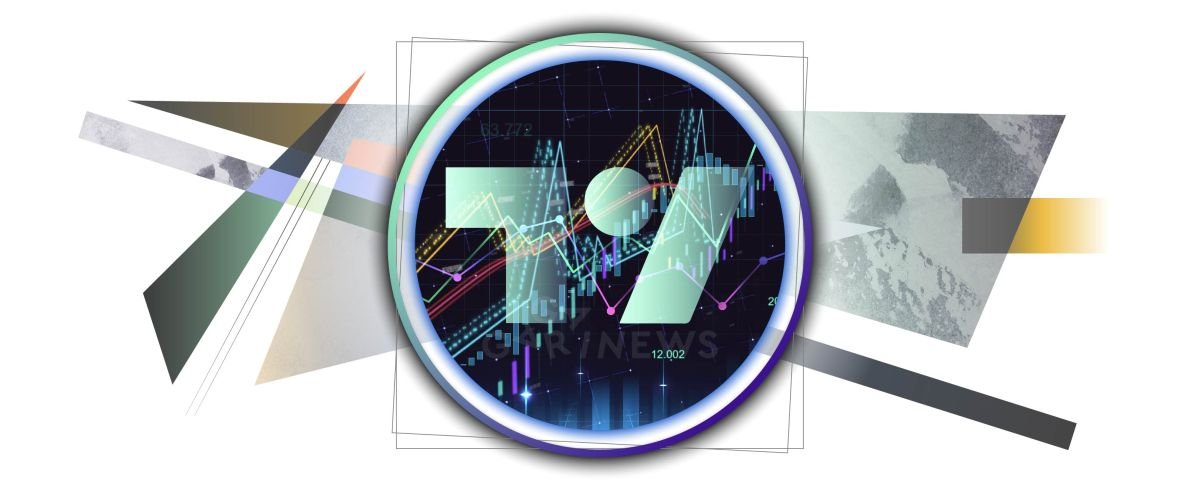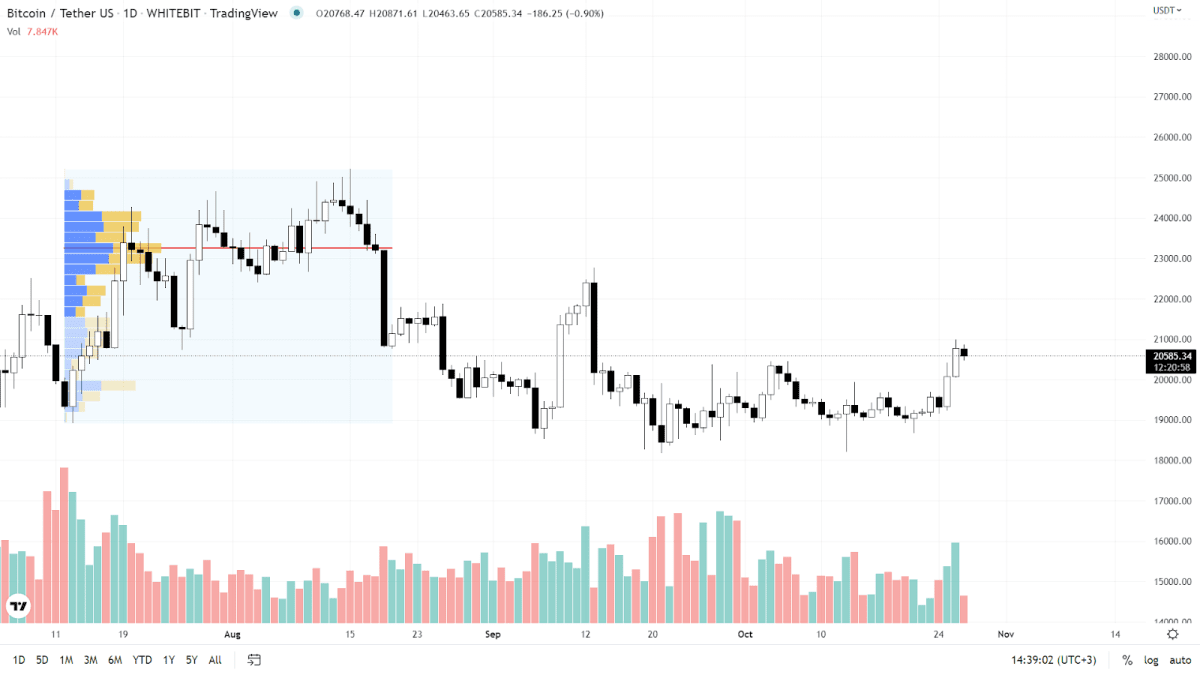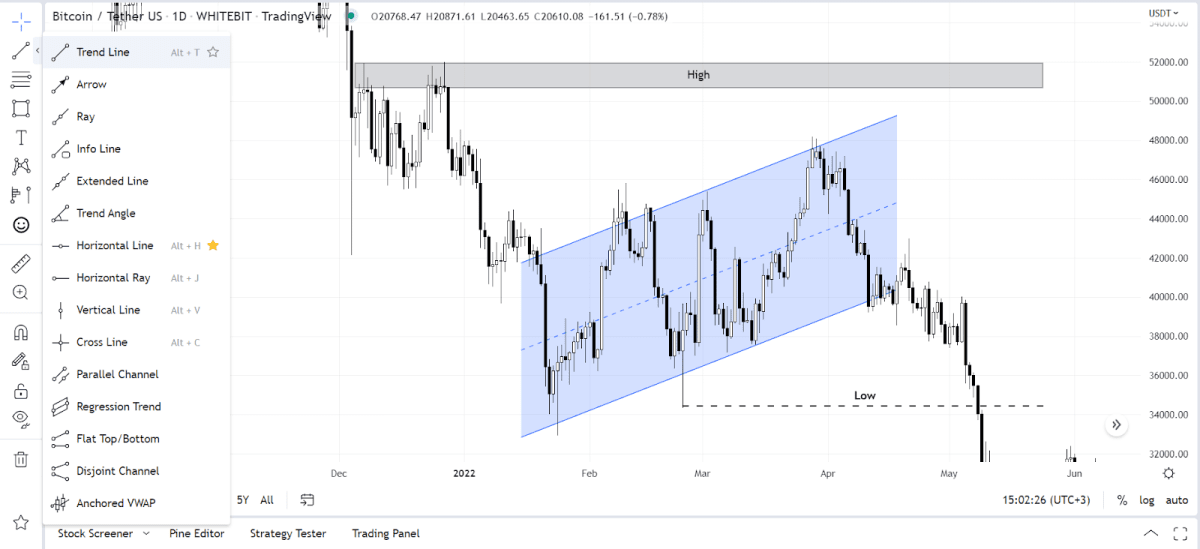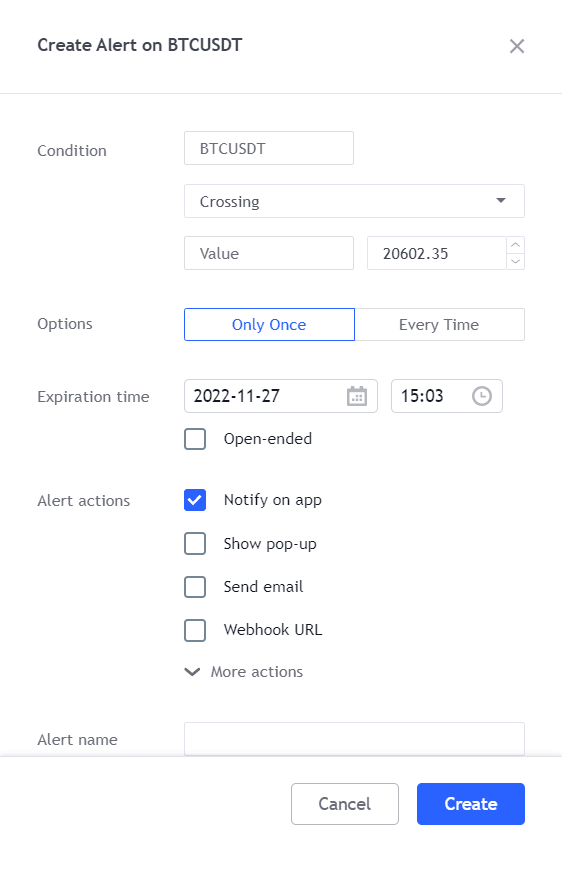TOP 5 Useful Chart Analysis Tools on TradingView

TradingView is an analytical resource that allows traders to analyze the charts for cryptocurrencies, stocks, Forex and other economy subjects.
Many beginners have difficulty using TradingView. The site contains many attributes of technical analysis that can confuse a trader. In fact, you don’t have to use many functions, which raises the question – what indicators on TradingView will help you best working with cryptocurrencies?
We have collected the TOP 5 tools that will help you quickly and compactly benefit from TradingView:
Volumes - vertical and horizontal
Trading volumes allow you to see the number of traded contracts. There are 2 types of volumes - vertical and horizontal. The vertical volume displays the amount of an asset that was traded by traders for a certain period of time (candlestick). The tool is located in the "Indicators" section under the "Volume" ticker.
Horizontal volume is a projection of traded contracts at a certain price. You can use it by clicking on one of the sidebars and selecting Horizontal Volume Profile. After that, we stretch the indicator in the desired area and get the result. Volumes are used to determine the truth of the rise or fall, strong price levels and their probable breakouts. More about this indicator can be found in our article on trading volumes.

Vertical and horizontal trading volume
Long / Short Position
To project your own trades onto a chart, TradingView has a Long / Short Position tool. With its help, traders calculate the point of opening a trade, stop and profit-taking point. The tool also displays the stop-to-take price ratio, which gives an understanding of the profitability of the trade.
The indicator is located in the left sidebar under the appropriate name. Users can customize the tool's color scheme and pop-up details to their own needs.

Long / Short Position
Fibonacci grid
Fib Retracement (or Fibonacci grid) is a graphical tool that allows you to draw the required number of levels and the proportional distance between them on the chart in one step. By default, the TradingView grid has 7-9 levels and multi-colored filling. The tool can be useful in identifying a potential price correction, as well as strong support and resistance zones.
Most often, traders use the Fibonacci grid to display a horizontal channel (“flat”) and trade sideways: after all, the quantity, color, and distance between levels can be adjusted manually.

Fibonacci Grid Tool on TradingView
Drawing tools. Segment, line, rectangle
Oddly enough, the most ingenious is always the simplest. The usual graphical tools in the form of horizontal lines and geometric figures are great for basic chart analysis. The rectangle is convenient for defining price zones, parallel lines allow you to display an upward or downward price trend.
All graphical indicators are in the left sidebar. Their properties can always be changed to suit your trading approach.

Graphic drawing tools
Alert
The Alert tool completely solves the lack of time issue for traders. Users can set notifications for crossing the price at any mark. The message can come to the phone, email or to the application itself. You can also create a signal for a large price spike in %, entry or exit from the price range, and so on.
Thus, you don’t have to monitor the chart constantly, but enter only at the right time, when there is a prospect of a position opening.

TradingView Alert Tool
Recommended

